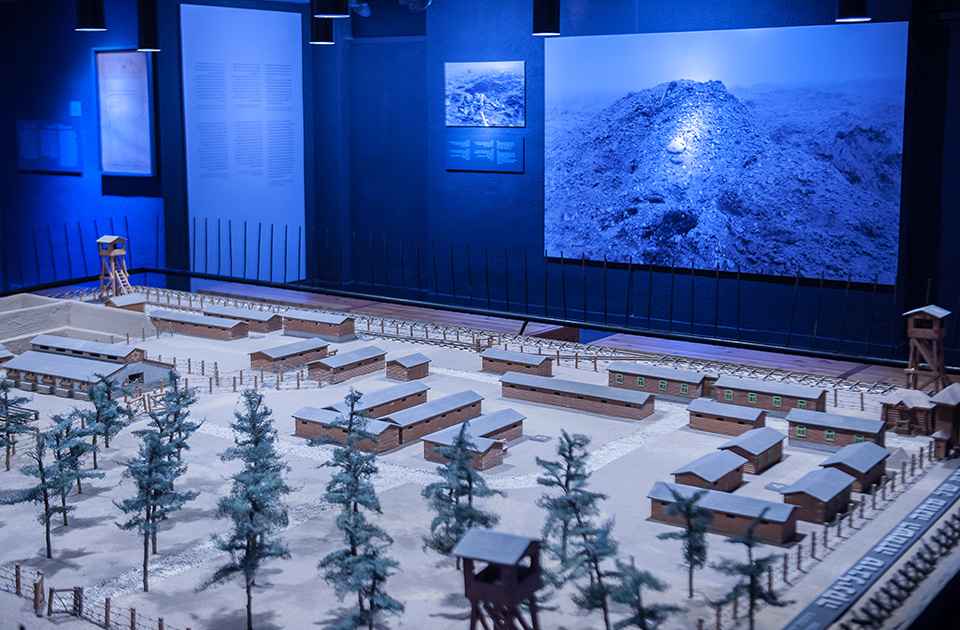Concentration and Extermination Camps
The industry that was the extermination of Europe’s Jews
This renewed exhibition (formerly “Hall of the Camps”) was inaugurated in October 2010 after two years of renovation, updating, and redesign. The displays concisely depict the industry that was the extermination of Europe’s Jews, presenting extraordinary testimonies and documentation, focusing on the Treblinka camp.
At the focal point of the Hall stands one of the most important exhibits in the Ghetto Fighters’ House, as well as one of the most significant in existence bearing witness to the extermination of European Jewry: the scale model of the Treblinka camp built in the 1950s by Jakow Wiernik, one of the few survivors of this camp where 875,000 people were put to death during a year’s time. The model, which was presented as evidence in Adolf Eichmann’s trial in Jerusalem, has undergone a special process of restoration and conservation for its permanent display in the new hall.
The exhibition, emphasizing the value of commemoration and bearing witness, includes eyewitness testimonies, artifacts from the GFH Archives, rare photographs, displays documenting the process by which the Jews were exterminated, and video footage, including excerpts from French director Claude Lanzmann’s noted film, “Shoah,” screened as an integral part of the exhibition’s permanent installation. This is the first instance of Mr. Lanzmann agreeing to incorporate excerpts from this film in any museum exhibition, and he came especially from France to participate in the Hall of the Camps’ inauguration as a guest of honor.
The Hall of the Camps is the first dedicated Holocaust-content museum space in which Arabic is one of the languages of display and guiding, alongside Hebrew and English, as an extension of the many Jewish-Arab activities conducted over the years by the GFH Center for Humanistic Education.


